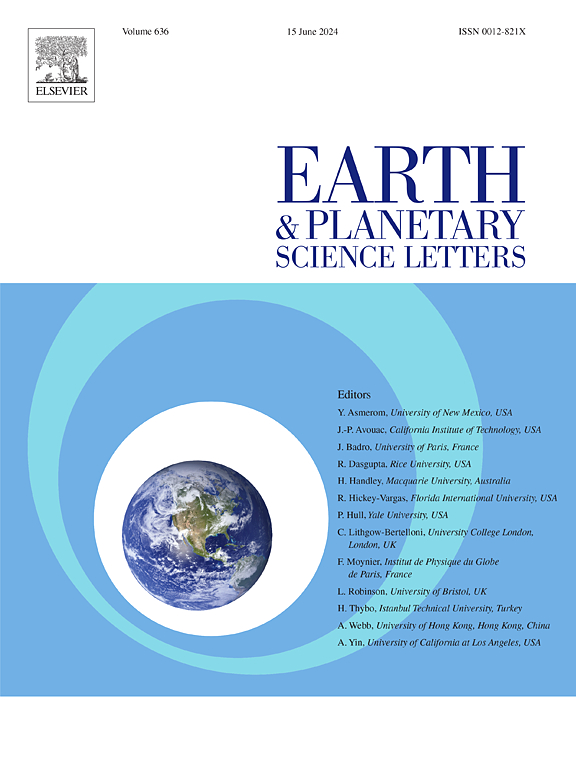An abrupt change in source materials for Chinese loess deposits at the Pliocene-Pleistocene boundary: Insights from K isotopes and modeling
IF 4.8
1区 地球科学
Q1 GEOCHEMISTRY & GEOPHYSICS
引用次数: 0
Abstract
The eolian deposits on the Chinese Loess Plateau (CLP) are key archives of late Cenozoic climate changes and atmospheric circulation, However, the long-standing controversy about the stability of dust sources over the last ∼ 6 Myr limits our understanding of the genesis of the CLP and its paleoenvironment implications. Here we report that an abrupt decrease in K isotope compositions (δ41K) of the CLP eolian deposits occurred at ∼2.58 Ma, with loess/paleosol displaying δ41K values (-0.41 ‰ to -0.63 ‰) lower than the bulk-silicate-earth-like Red Clay values (-0.35 ‰ to -0.45 ‰). Furthermore, The δ41K values of eolian deposits are negatively correlated with the Na2O/K2O and Na2O/Al2O3 ratios, with negligible influence from different grain size fraction. These observations indicate that the δ41K values are not controlled by post-depositional weathering at the CLP, but rather by an increased export of weathered detritus or recycled sediments from the Northeastern Tibetan Plateau, as revealed by K isotope surveys of potential source materials and Earth system model simulations. Our results further suggest that the intensified global cooling during the Quaternary promoted greater sediments erosion and altered the dynamics of the westerlies and the Siberian High, with important implications for understanding the paleoenvironment changes and reconstruction of the East Asian atmospheric circulation across the Pliocene-Pleistocene boundary.
中国黄土沉积在上新世-更新世边界的物质突变:来自K同位素和模拟的启示
中国黄土高原的风成沉积是研究晚新生代气候变化和大气环流的重要资料,然而,近6千万年以来关于风沙源稳定性的争论限制了我们对黄土高原成因及其古环境意义的认识。在这里,我们报道了CLP风沙沉积物的K同位素组成(δ41K)在~ 2.58 Ma时突然下降,黄土/古土壤的δ41K值(-0.41‰至-0.63‰)低于大块硅酸盐类土红粘土的δ41K值(-0.35‰至-0.45‰)。风成沉积物的δ41K值与Na2O/K2O和Na2O/Al2O3比值呈负相关,不同粒度组分的影响可以忽略不计。这些观测结果表明,CLP的δ41K值不受沉积后风化作用的控制,而是受青藏高原东北部风化碎屑或再循环沉积物出口增加的影响,这是潜在物质来源的K同位素测量和地球系统模式模拟的结果。第四纪全球变冷加剧导致沉积物侵蚀加剧,并改变了西风带和西伯利亚高压的动力学,这对理解上新世—更新世边界的古环境变化和重建东亚大气环流具有重要意义。
本文章由计算机程序翻译,如有差异,请以英文原文为准。
求助全文
约1分钟内获得全文
求助全文
来源期刊

Earth and Planetary Science Letters
地学-地球化学与地球物理
CiteScore
10.30
自引率
5.70%
发文量
475
审稿时长
2.8 months
期刊介绍:
Earth and Planetary Science Letters (EPSL) is a leading journal for researchers across the entire Earth and planetary sciences community. It publishes concise, exciting, high-impact articles ("Letters") of broad interest. Its focus is on physical and chemical processes, the evolution and general properties of the Earth and planets - from their deep interiors to their atmospheres. EPSL also includes a Frontiers section, featuring invited high-profile synthesis articles by leading experts on timely topics to bring cutting-edge research to the wider community.
 求助内容:
求助内容: 应助结果提醒方式:
应助结果提醒方式:


